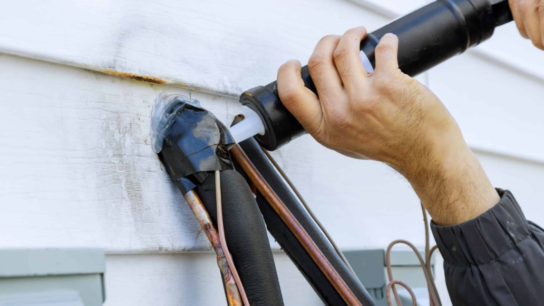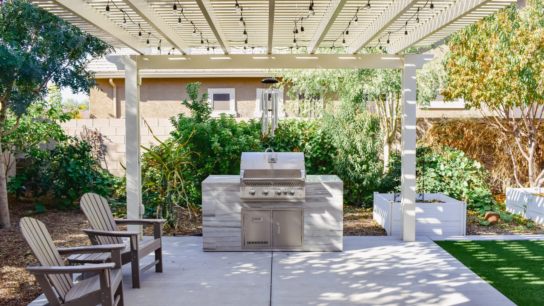Ensuring proper insulation in your home is crucial for maintaining energy efficiency, reducing utility costs, and enhancing overall comfort. Upgrading your home’s insulation not only helps regulate indoor temperatures but also contributes to environmental sustainability by reducing energy consumption. In this guide, we’ll explore the importance of insulation, key areas for upgrading, and benefits of improved insulation in terms of efficiency and comfort for your home.
Subtitles:
- Understanding the Importance of Insulation
- Areas for Upgrading Insulation
Understanding the Importance of Insulation
1. Energy Efficiency
Proper insulation acts as a barrier against heat transfer, keeping your home cooler in summer and warmer in winter:
- Thermal Resistance (R-Value): Insulation’s effectiveness is measured by its R-value, indicating its ability to resist heat flow. Higher R-values provide better insulation and energy efficiency.
- Reduced Energy Consumption: By reducing heat loss or gain through walls, ceilings, floors, and windows, insulation lowers the workload on heating, ventilation, and air conditioning (HVAC) systems, leading to lower energy bills and environmental impact.
2. Comfort and Indoor Air Quality
Improved insulation contributes to a more comfortable indoor environment and better indoor air quality:
- Temperature Regulation: Consistent indoor temperatures result in enhanced comfort and reduced temperature fluctuations throughout different seasons.
- Moisture Control: Proper insulation helps prevent moisture buildup, condensation, and mold growth, promoting healthier indoor air quality and structural integrity.
3. Environmental Benefits
Enhanced insulation aligns with environmental sustainability goals and reduces greenhouse gas emissions:
- Energy Conservation: Reduced energy consumption translates to lower carbon emissions and environmental impact, contributing to conservation efforts and sustainable living practices.
- Resource Efficiency: Efficient insulation usage optimizes resources by minimizing energy wastage, promoting resource conservation, and supporting eco-friendly building practices.
Areas for Upgrading Insulation
1. Attic Insulation
The attic is a critical area for insulation upgrades due to its significant impact on overall energy efficiency:
- Types of Attic Insulation: Consider options such as fiberglass batts, blown-in cellulose or fiberglass, spray foam insulation, or rigid foam boards based on R-value requirements, moisture resistance, and installation suitability.
- Air Sealing: Combine insulation upgrades with air sealing measures, such as sealing gaps, cracks, and air leaks around attic access points, ductwork, and plumbing penetrations, to maximize insulation effectiveness.
2. Wall Insulation
Improving wall insulation enhances thermal performance and reduces heat loss or gain through exterior walls:
- Insulation Materials: Choose insulation materials suitable for wall cavities, such as fiberglass, cellulose, foam boards, or spray foam, considering factors like moisture resistance, fire safety, and installation ease.
- Insulation Techniques: Explore options for retrofitting insulation in existing walls, such as blown-in insulation, injected foam, or exterior insulation and finish systems (EIFS), to upgrade insulation without major structural changes.
3. Floor and Crawl Space Insulation
Insulating floors and crawl spaces helps maintain indoor temperatures and prevents moisture-related issues:
- Subfloor Insulation: Install insulation under floors in heated or unheated spaces, using materials like rigid foam boards, spray foam, or fiberglass batts, to reduce heat transfer and improve floor comfort.
- Crawl Space Encapsulation: Consider encapsulating crawl spaces with vapor barriers, insulation, and moisture control measures to prevent moisture intrusion, mold growth, and energy losses.
4. Window and Door Insulation
Enhance energy efficiency and comfort by upgrading window and door insulation:
- Weatherstripping: Apply weatherstripping and caulking around windows and doors to seal gaps, prevent air leaks, and improve thermal performance.
- Insulating Window Treatments: Install insulating window treatments, such as thermal curtains, blinds, or window films, to reduce heat transfer, block UV rays, and enhance insulation properties.
Conclusion
Upgrading your home’s insulation is a smart investment that delivers long-term benefits in terms of energy efficiency, comfort, and environmental sustainability. Understanding the importance of insulation in regulating indoor temperatures, improving indoor air quality, and reducing energy consumption underscores its role as a foundational element of a well-functioning home. By focusing on key areas such as the attic, walls, floors, crawl spaces, windows, and doors for insulation upgrades, you can create a more energy-efficient, comfortable, and eco-friendly living environment. Consult with insulation professionals, consider insulation types and techniques suited to your home’s needs, and prioritize insulation upgrades as part of your overall home improvement strategy for enhanced efficiency and comfort year-round.








